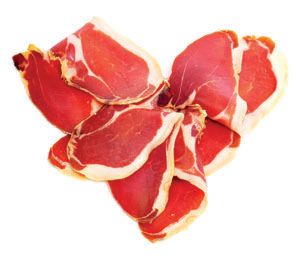Healthy ham
A collaborating team of investigators1 based in Spain, Japan and the UK believe they may have discovered the potential health benefits of Spanish dry-cured ham. They consider that the ham could reduce high blood pressure associated with cardiovascular disease when consumed as part of a healthy diet.

A collaborating team of investigators1 based in Spain, Japan and the UK believe they may have discovered the potential health benefits of Spanish dry-cured ham. They consider that the ham could reduce high blood pressure associated with cardiovascular disease when consumed as part of a healthy diet.
The investigators fractionated water-soluble peptides from the ham samples taken from the ham by size-exclusion chromatography (SEC) followed by reversed-phase high performance liquid chromatography (RP-HPLC). Nano-liquid chromatography coupled to mass spectrometry was used to analyse a total of 73 peptides selected from bioactive fractions. The anti‑hypertensitivity of candidate peptides was quantified; notably, the majority of the candidates were of skeletal muscle origin. The in vitro activity of peptides was measured by testing inhibition of the enzymatic activity of angiotensin I converting enzyme (ACE). ACE is a common target for clinical inhibitors used for reducing hypertension. The in vivo hypertensive activity was measured by observing the effect of administering candidate peptides to hypertensive rats.
The unique peptide profile identified is hypothesized to be the result of an accumulation of fragment by-products of endogenous muscle enzyme break-down during the treatment of the ham that would otherwise not be present.
The team’s results suggest that the presence of the anti‑hypertensive peptides may off-set the adverse effects of the high levels of sodium chloride on blood pressure. Moreover, studies to elucidate the mechanism of action may lead to advances in drug discovery and development.
1. E. Escudero et al, Journal of Proteomics, (http://dx.doi.org/10.1016/j.jprot.2012.10.019)(2012).
This story originally appeared in The Column. Click here to view that issue.

Regulatory Deadlines and Supply Chain Challenges Take Center Stage in Nitrosamine Discussion
April 10th 2025During an LCGC International peer exchange, Aloka Srinivasan, Mayank Bhanti, and Amber Burch discussed the regulatory deadlines and supply chain challenges that come with nitrosamine analysis.












